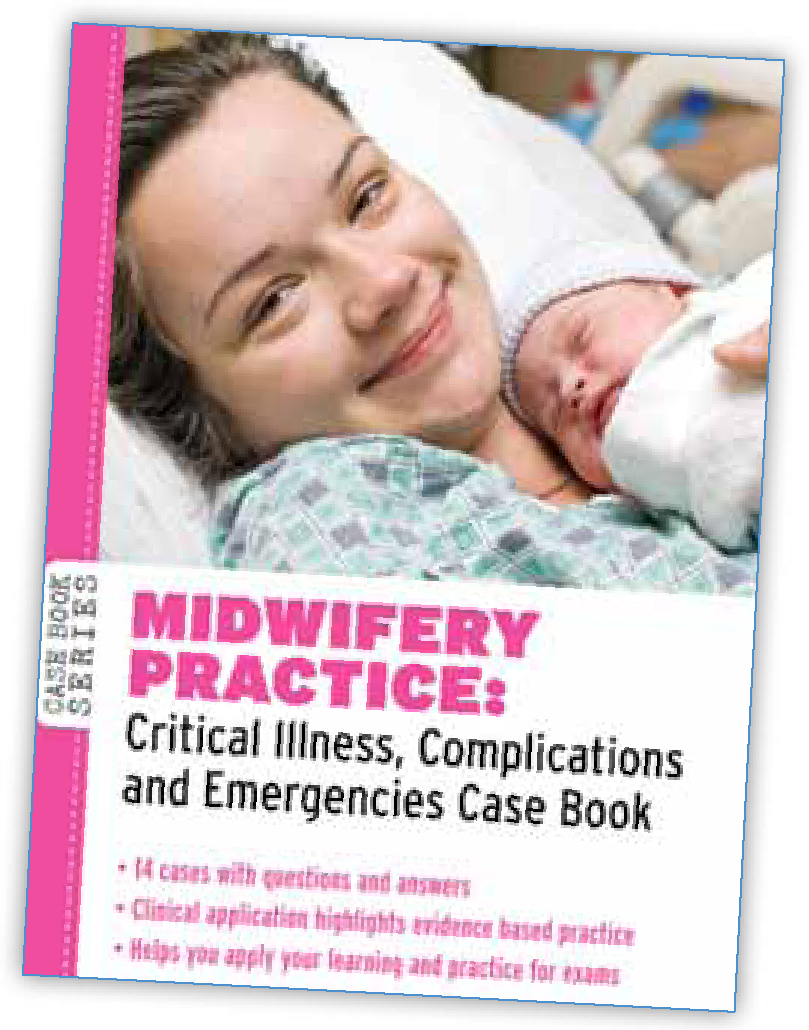
As technology and innovation drive health and maternity care into the future, more women with complicated and specific health care needs are conceiving and giving birth. With this in mind, this book provides the excellent opportunity to investigate 14 cases, which are thought provoking and challenging to health professionals and students alike. The pregnant woman who is unwell poses unique challenges in that there are always a minimum of two lives at risk and therefore their care requires highly skilled and knowledgeable professionals.
According to the Centre for Maternal and Child Enquiries (CMACE) (2011) report, there has been a decline in maternal deaths relating to thromboembolism and haemorrhage, which is reassuring. Despite this however, the increase in maternal mortality pertaining to sepsis as a direct cause of maternal deaths is of a concern. Interestingly, the first case study: ‘Recognition of the critically ill woman’ discusses the importance of early recognition and intervention when critical illness, including sepsis is suspected.
Each chapter begins with expectations of the readers' prior knowledge and understanding. This is useful as it gives the reader an overview of what is to be discussed and enables the reader to get the most out of it. There are a number of self-assessment questions and recommended prior reading to gain further knowledge before proceeding with the chapter. The case studies begin with a scenario of a woman and the circumstances she is exposed to. These are typical situations that midwives can find themselves in and thus makes learning easier to relate to clinical practice. Following the scenario brief, there are questions about what care would be given to the woman. The answers are fully and strongly evidence-based. Again, very useful to students training and assisting with getting familiar with keynote references. Throughout the cases, occasional ‘check points’ offer clinical practice tips and notes to consider when out in practice; either on placements as a student or as a qualified professional. The ‘annotated and further reading’ section following each chapter is particularly useful because there a few sentences explaining what the further reading recommendations are about providing choice on what to read whilst having an idea of what it entails.
Case reviews and outcomes discuss the scenarios after the acute emergency or critical illness episodes and denote how the appropriate management lead to successful outcomes. It is beneficial to understand what contributes to safe and effective care delivery. I believe, however, it would have been worthwhile mentioning that following such incidents in the clinical environment, professionals and students involved should be encouraged to attend debrief sessions to discuss the care and management of cases and identify areas of what worked well and what requires improvement.
Midwifery students partake in objective structured clinical examinations or OSCE's at some point within their training and most will involve the management of a critically ill woman or emergency situations. Raynor, Marshall and Jackson's book is very well placed to assist with the preparation and studying for these practical examinations. On the other hand, it is worth noting that the Case Book is not to be compared to a quick reference guide, as it demands time and lengthy consideration when using it to supplement university studies. Contrary to this, the text boxes with bullet-points contain concise and to-the-point information, for example, the key principles in the management of an antepartum haemorrhage (p 122) or the early warning signs of sepsis (p 181).
Finally, the chapters end with summaries of the key points within the topics, which occasionally are specific recommendations from organisations such as the Royal College of Obstetricians and Gynaecologists and CMACE, which are key references relevant to current midwifery practice. The summaries are succinct, clear and act as refreshers for the chapters read.
In general, Midwifery Practice: Critical Illness, Complications and Emergencies Case Book is simple to follow and diagrams are not too complicated to understand. This is a bonus, as there are many other books on midwifery practice that have very complex and intricate images and for some readers, can be difficult to interpret. Moreover, there is an element of multidisciplinary working and early intervention, which is important for problem solving in a timely manner and reducing morbidity and mortality. As a newly qualified midwife, having a good evidence-based text such as this in my own collection is very advantageous and will support my transition from student to qualified practitioner in the preceptorship period and years to come.

